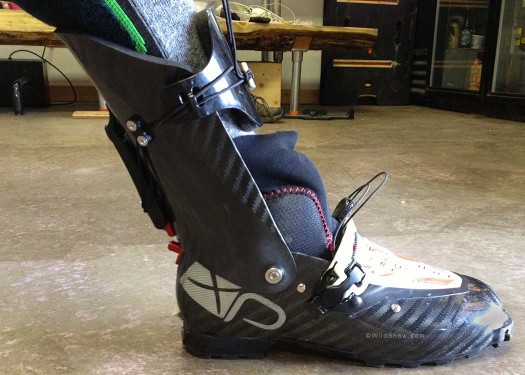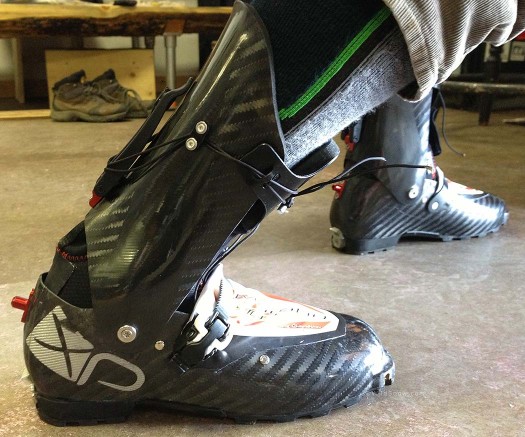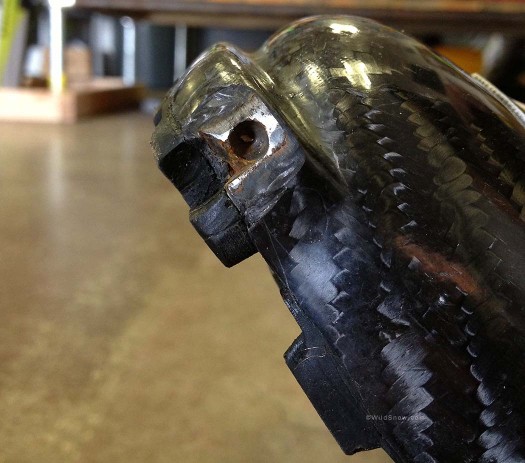Photos by Randall Young
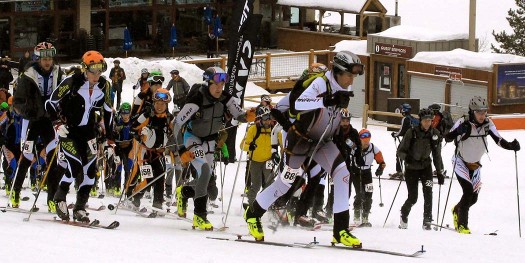
The start of the 5 Peak Race. To left, duo winner (teamed with Max Taam) John Gaston showing off his Gignoux. You can see Marshall Thompson sporting next year's Dynafit version through the legs of the lead skinner and my pair just past his. Thanks to Courtney Kenady of climbbetty.com for the photo.
Several carbon ski mountaineering race boots are now available on the market, but the first commercially made carbon ski running shoe was made by Pierre Gignoux in France back in 2006. When Lou showed me the Gignoux he just acquired for “testing and review,” I suddenly remembered that my race boots were “broken,” all of the other boots on our shop’s wall were “unavailable,” and my feet were “exactly” the sample size. After I wore them for a race he asked me to do a short blog post on them and my response was, “What boots? I don’t remember you giving me anything.”
Once my memory returned I noticed the 510 gram shoes still lying next to my pillow. The floating cuff is the most unique feature of this boot. It seems impossible that a tiny combination of carbon and string could amount to any true downhill performance. However, with a simple lever throw, the carbon cuff locks and the boot is remarkably stiff. The tech fittings are far from standard, and it is recommended that the Morpho only be used with the Gignoux binding. When clicking into my Ski Trab race bindings the pins pulled in deeper then normal and even without the toes locked I could not budge the boot from toe piece. In other words, careful testing and installation can probably give you a setup with reliable safety release, but you can’t be lazy when you’re setting this boot up in a system.
After wearing the Morphos for several hours around the shop I felt they were ready for their first test run, the three-plus hour Breckenridge 5 Peaks race. With four ascents for over 6,000 vertical feet and five technical descents, what better way to get used to a new pair of boots? The course tested every aspect of the Gignoux: long low angle climbs that gave way to icy windblown switchbacks of kick turns, three booters to test walk mode and some tricky descents in variable snow for ski performance.
Since I thought the readers of Wildsnow deserved to know how those nonstandard techfits would function under extreme stress, I threw in a 40 mile an hour tomahawking crash off of Peak 7. I rarely make it through a race without hitting the snow at least once but this crash was catastrophic. As I hurtled through the snow waiting for the popping sounds to begin from my knees and hopefully not progress to my neck, one ski was ripped off my leg and ran 1,000 vertical feet off the wrong side of the ridge. Shaken but unscathed, a combination of poor one foot skiing and ungraceful glissading led me back to my ski. I can say this crash was hard enough that I was glad for the release and after this inconsequential setback I was back on course.
The complete lack of cuff when in tour mode made for incredible skinning and hiking, but most amazing was when the lever was thrown down to ski mode. I never even thought about the two square inches of foam contacting my shin was all that made up the cuff. The boots skied remarkably well (albeit in “race” type downhilling without too much concern for niceties such as highly progressive flex). There is no question that my shins were sore from the localized pressure of the cuff. This boot is a high-end race boot and I would certainly keep another “heavier” pair of boots around for training days.
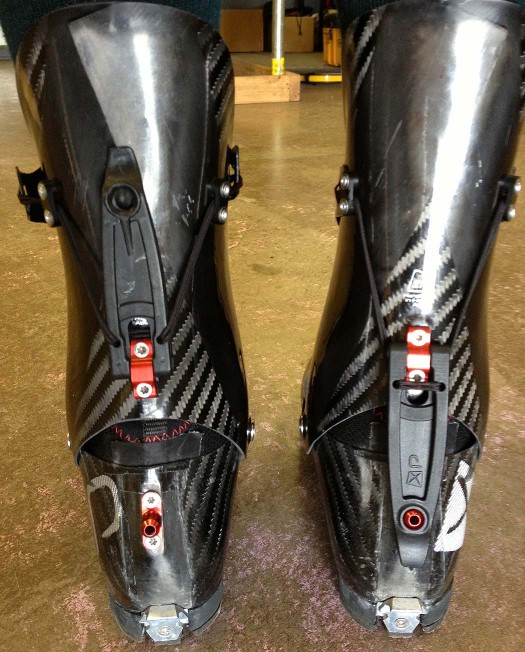
A similar touring throw to an Alien, but it takes a little more attention to ensure the ski mode is engaged.
If carbon is your addiction too, then you are in luck, Dynafit will be distributing this boot in North America next season (Pierre Gignoux Dynafit RC1). I just added a pair to our a preseason order. WildSnow has more plans for testing and reviews of the Gignoux boots (and I’ve got at least one more race scheduled with them on my feet) — should be fun — and we have the crazy 92 gram binding as well!
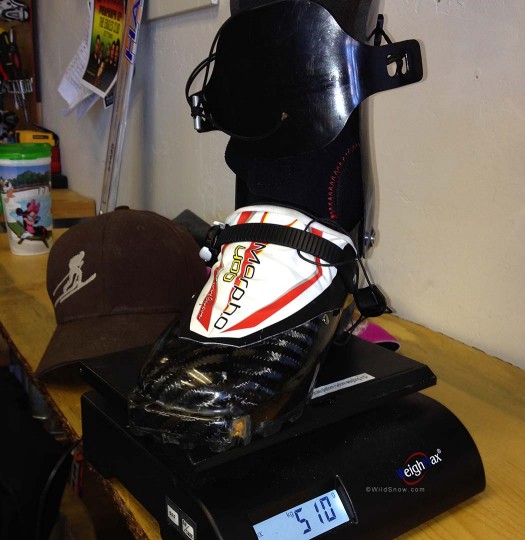
Morpho 400 refers to the weight of the shell, but with the weight of the half liner it still comes in at 510 grams. I saved 315 grams per boot, but since Wildsnow is not the place for full fledged weight weenies like myself that translates to 8.5 donuts.
(WildSnow guest blogger Doug Stenclik is co-owner of Cripple Creek Backcountry, the local shop only a few blocks from WildSnow HQ. Spending the purse at either Dunkin Donuts or Krispy Kreme is often his post race dilemma.)
Doug Stenclik is an avid skimo racer and ski mountaineer who lives for sharing the amazing sports of ski touring and splitboarding. Since his first time on skins he was hooked and the obsession has taken him all over the United States and the world pursuing the human powered ski turn. He founded Cripple Creek Backcountry in 2012 and took over the Colorado Ski Mountaineering Race Cup in 2014 to spread knowledge and the love of the sport. In 2019 he took a step back from the ski shop and race promoter life to become a publishing partner with WildSnow.

